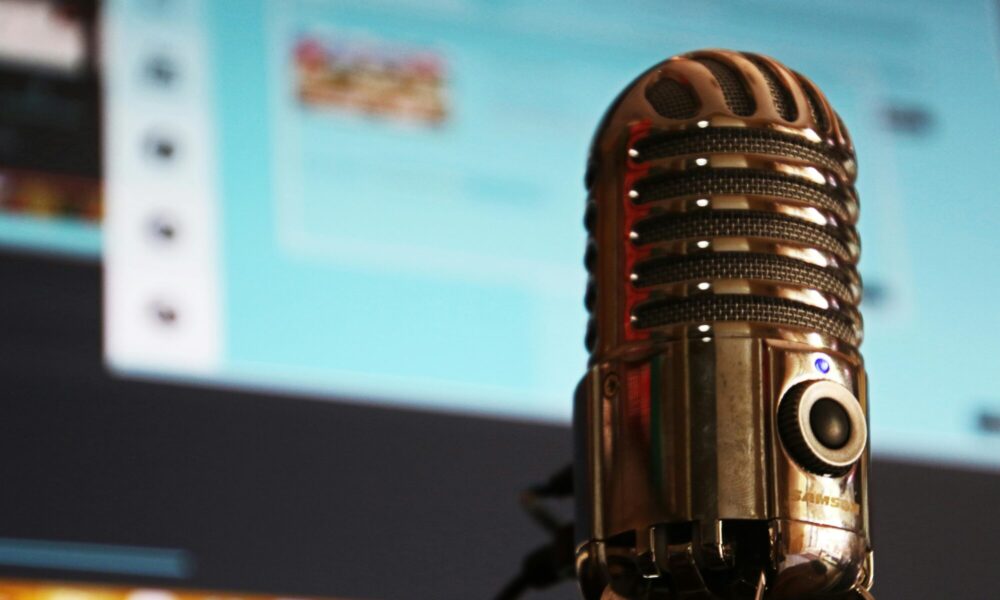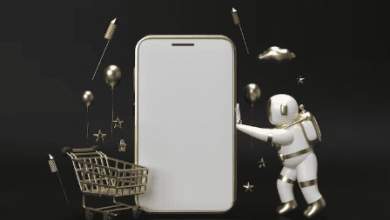Interview with Luke Matthews, LinkedIn Ghostwriter, AI Writing Lessons

This is an interview with Luke Matthews, LinkedIn Ghostwriter, AI Writing Lessons
Can you introduce yourself and share your expertise in LinkedIn ghostwriting, AI for social media, and digital marketing?
I’m Luke Matthews, a LinkedIn ghostwriter and social media content creator with over 180,000 followers. I know, I know you’re thinking “LinkedIn has content creators??” Well, surprise, surprise, they do, and I am perhaps the most outspoken of them all.
I’ve ghostwritten for 50+ brands since 2020, building my business from scratch to consistent six figures. I started off like everyone else – skeptical of AI. But in early 2023, I dove into ChatGPT and quickly transformed my ghostwriting business to be 100% AI-powered.
Prior to LinkedIn, I was all over the place career-wise:
- Monetized as a sustainable fashion blogger on Instagram
- Worked in ministry (yeah, really)
- Spent 10+ years in construction
I specialize in helping tech CEOs, AI startups, and founders create content that actually converts on LinkedIn. Not the boring corporate stuff everyone else is posting. I teach people how to write with AI while keeping their unique voice.
I’m known for pushing boundaries – I’ve been banned 8 times on LinkedIn (oops). But that’s my whole thing. When everyone zigs, I zag.
These days I’m living the dream – traveling around South America, working when I want, and teaching others how to build their own digital empires through my courses and newsletters.
What inspired you to specialize in these areas, and how has your career path led you to where you are today?
My career path looks like someone threw darts at a board of random jobs. I started in ministry of all places. Yep, Christian ministry in my 20s.
Then I spent 10+ years in construction, getting my hands dirty and learning what hard work really meant. Good money, but my body was breaking down.
The pivot to social media happened because I was dating someone who was into sustainable fashion. We started a blog to support artisans in third-world countries, and it actually took off. Suddenly brands were sending us clothes to take pictures of.
In 2019, I was managing that fashion/tech brand’s Instagram when they asked me to figure out LinkedIn too. I had no clue what I was doing, so I went looking for advice.
That’s when I stumbled on a Gary Vaynerchuk video. He was screaming about two platforms about to blow up: TikTok and LinkedIn.
The thing is, I hate being on camera. Like, truly despise it. So TikTok was a hard pass. LinkedIn it was.
When I started on LinkedIn in 2020, it was like walking into an old folks’ home. So uptight and boring. Educational content EVERYWHERE.
So I had this crazy idea…What if I just posted whatever the hell I wanted? Selfies, memes, GIFs, random thoughts about bacon and pizza. The complete opposite of what everyone else was doing.
The corporate folks ate it up. Turns out CEOs and executives are TIRED of boring content.
As for AI? I started learning it to troll another LinkedIn influencer who was sharing all these ChatGPT carousels. I thought it was lame so I started playing with it myself.
Plot twist: I fell in love with it. AI solved my biggest business problem – I hated managing contractors but loved managing prompts.
Everything I’ve specialized in just happened organically. I followed what I enjoyed and what made money, and here I am – traveling South America, writing for rebels, and teaching others how to do the same.
Based on your experience, how has AI transformed the landscape of social media marketing, and what are some unexpected challenges you’ve encountered?
AI has completely messed up social media marketing. Wait, that’s not what you expected me to say, was it? Weird for an “AI guy” to say that, right? But it’s true. Since 2023, here’s what I’ve seen happen on LinkedIn:
My feed is flooded with “nice post!” comments from people using basic AI tools. Everyone’s content looks and sounds the same. Cold outreach has become even LESS personalized (which I didn’t think was possible). Most “AI-written” posts sound like robots trying to be humans.
The biggest challenge is that AI makes it too easy to be lazy.
When I first started using ChatGPT for my ghostwriting business, I thought I’d found the holy grail. I could write client posts in minutes instead of hours!
But then I noticed something disturbing.
The posts lacked soul. They were missing that human element that makes people stop scrolling and actually care. The biggest challenge I’ve faced is finding the balance between efficiency and authenticity. AI can give you a decent first draft, but if you’re not heavily editing it to match your voice, you’re just adding to the noise.
Another surprise is that AI has actually made standing out HARDER, not easier.
Now that everyone has access to the same tools, the bar for quality content has actually gone up. The marketers winning right now aren’t the ones using the fanciest AI. They’re the ones taking the extra time to add their unique perspective.
The real transformation isn’t in using AI to create content faster. It’s in using AI to get ideas and then applying your own human creativity to make something truly unique.
In 2025, knowing how to customize AI output is the skill that separates pros from amateurs. Anyone can prompt ChatGPT. Not everyone can make the output feel human.
Can you share a specific instance where you used AI writing tools to significantly improve a client’s LinkedIn presence, and what was the outcome?
I’ll tell you about this AI startup CEO I worked with last year. Classic tech founder – brilliant with code, terrible with people. He’d been posting on LinkedIn for months with zero traction. His content was mainly dry technical updates about his AI model that only other engineers would understand. No personality. No storytelling. Just pure tech jargon that put people to sleep.
When I took over, I completely flipped his strategy using AI. Here’s exactly what I did:
I spent a week studying his past interviews, emails, and casual conversations. I needed to understand how he actually talked, not just how he wrote.
Then I created what I call a “content matrix” in ChatGPT – basically a spreadsheet of content ideas organized by topics relevant to his business. I prompted ChatGPT to generate 50+ hook ideas across 5 categories:
- Founder journey stories
- AI misconceptions
- Future predictions
- Industry problems
- Practical AI applications
I picked the most compelling hooks and used Perplexity to research each topic, gathering insights his competitors weren’t talking about.
The magic happened in the editing phase. I’d take the AI-generated first draft and completely rewrite it to match his actual speaking voice – including his awkward jokes and specific technical phrases he used.
The results were insane. His engagement jumped 5x within two weeks. Instead of 5-10 likes per post, he was getting 50-100 consistently.
But what really mattered was the quality of people engaging changed dramatically. Before, it was just his employees and a few random connections. After, he was getting comments from VCs, potential partners, and even customers.
Within 3 months, he closed two partnership deals directly from LinkedIn conversations. He even landed a podcast interview that brought in a $200K client.
The ironic part? He was using AI to seem more human.
The biggest lesson from all this was that AI isn’t about replacing your voice, it’s about amplifying it. I didn’t use AI to write generic posts faster. I used it to explore ideas he wouldn’t have thought to write about, then edited heavily to keep his authentic voice.
Most people get this completely backward. They use AI to write faster but end up sounding like everyone else. The real power is using AI for ideation, then injecting your unique perspective.
In your opinion, how can businesses strike a balance between leveraging AI for efficiency and maintaining an authentic voice in their digital marketing efforts?
Most businesses are doing AI all wrong. They think the goal is to create content faster. That’s only half the equation. The real balance comes down to knowing which parts of the process to automate and which parts require human touch. Here’s how I approach it:
- Automate the boring stuff:
- Research and data gathering
- Initial content ideation
- First draft generation
- Basic formatting
- Keep the human touch for the important stuff:
- Your unique perspective and hot takes
- Personal stories and experiences
- Emotional hooks and transitions
- Final editing for voice and tone
The businesses winning with AI right now follow a simple rule. They use AI as a starting point, never as the final product.
I’ll let you in on a secret. When I work with clients, AI does about 70% of the heavy lifting. But that last 30%? That’s where all the magic happens.
Here’s my exact process for maintaining an authentic voice:
- Create a “voice document” first. Document your client’s unique phrases, sentence structures, and content quirks. What words do they overuse? Do they write in long paragraphs or short bursts? The more specific, the better.
- Use AI for ideation, not creation. I use tools like Perplexity and ChatGPT to explore topics and generate outlines – not to write the final copy. This gives us a map without dictating how we drive.
- Edit ruthlessly. I delete about 50% of what AI gives me and rewrite the rest. If you’re not heavily editing AI output, you’re doing it wrong.
- Test with real humans. Before publishing, I show drafts to people who know the client well. If they can’t tell it was AI-assisted, we’ve hit the mark.
The companies failing with AI are the ones treating it like a magic content button. The ones succeeding understand that AI is just a really smart assistant, not a replacement for their unique voice.
Your audience follows YOU for a reason. They want your perspective, not ChatGPT’s. The most authentic marketing will always have a human fingerprint. AI should amplify your voice, not replace it.
What’s the most common misconception about LinkedIn ghostwriting that you’ve encountered, and how do you address it with your clients?
The biggest misconception about LinkedIn ghostwriting?
“A ghostwriter will make me sound like everyone else.”
It’s the fear I hear from almost every potential client. They’ve seen the sea of identical LinkedIn content – the humble brags, the “I’m humbled to announce,” the cookie-cutter success stories – and they’re terrified of blending in.
Here’s what I tell them: a bad ghostwriter makes you sound like everyone else. A good ghostwriter makes you sound more like yourself than you do. My job isn’t to write in some professional LinkedIn voice. It’s to find your unique voice and amplify it.
When I onboard a new client, I don’t start by asking about their business goals or content strategy. I start by asking weird questions like:
“What’s the most controversial opinion you have about your industry?”
“What do you say in private that you’d never say publicly?”
“If your competitors were all in a bar, what would you want to scream at them?”
These questions get to the real person behind the LinkedIn profile. And that’s the voice people actually want to hear.
Another huge misconception is that ghostwriting is fake or inauthentic. I flip this around completely. I tell clients that ghostwriting actually makes their content MORE authentic, not less. Why? Because most executives know what they want to say but struggle to say it effectively. Their thoughts get lost in jargon, corporate speak, or overly complex explanations.
My job is translation, not fabrication. I’m taking their actual thoughts and translating them into content that resonates.
The best clients understand that ghostwriting is like having a personal trainer. The results are still yours – you’re just getting expert help to achieve them. The reality is that 90% of the “thought leaders” on LinkedIn use ghostwriters. The only difference is that my clients are honest enough to admit they need help telling their story.
When a client gets hung up on this misconception, I remind them: “Your audience doesn’t care who typed the words. They care if the words are worth reading.”
Can you describe a situation where an AI-driven social media strategy backfired, and what valuable lesson did you learn from that experience?
I once completely bombed a client’s entire LinkedIn strategy because I trusted AI too much. This was early 2023 when ChatGPT was still new. I had this fintech CEO client who needed content ASAP – like, yesterday. I had just discovered how to use AI for writing, and I was obsessed with the efficiency. So instead of my usual process, I went all-in on automation. I fed ChatGPT some basic info about the client, generated 30 posts in one day, and scheduled them all without my usual heavy editing.
Big. Mistake.
About a week in, engagement dropped to nearly zero. Comments went from thoughtful responses to crickets. Something was clearly wrong.
When I actually read through the posts that were going out, I cringed hard. The AI had picked up on some industry jargon from the client’s website and was overusing it EVERYWHERE. Every post sounded like it was written by the same boring fintech robot.
Even worse, the AI had completely missed the client’s actual personality. This guy was known for his straightforward, no-BS approach to financial advice. But the AI-generated content was full of corporate platitudes and generic “thought leadership.”
The final straw was the AI referenced a recent industry report that didn’t actually exist. A follower called it out in the comments, making my client look like he was making things up.
I had to emergency call the client, eat a massive slice of humble pie, and spend a weekend rewriting everything.
The lessons were painful but valuable:
- AI is a starting point, not a finishing line. No matter how good the output seems, it needs human review.
- Facts need triple-checking. AI will confidently make shit up, and you’ll be the one looking stupid.
- Voice matters more than volume. Ten authentic posts beat 30 generic ones every time.
- The more specialized the industry, the more careful you need to be with AI.
Now I have a strict rule – client content always goes through at least two human editing passes before publishing. I use AI to generate ideas and rough drafts, but never for the final product.
The irony is that using AI actually requires MORE attention to detail, not less. It’s a tool that amplifies your process – both the good and the bad parts.
How do you see the role of human creativity evolving in digital marketing as AI tools become more sophisticated?
Human creativity isn’t dying. It’s evolving into something more valuable. As AI gets better at creating “pretty good” content, being “pretty good” is no longer enough. The bar has been raised.
Here’s what’s happening right now:
The middle ground is disappearing. The stuff that took moderate talent to create is being completely taken over by AI. Basic social posts, simple ad copy, standard email sequences – AI can do all that at 80% quality now.
So where does that leave human creativity?
It’s pushing us to the edges – the truly original, the deeply human, the stuff AI can’t touch.
Think of it this way:
AI is exceptionally good at taking what already exists and remixing it. It’s basically the world’s best blender – you give it ingredients, it gives you a smoothie.
But it can’t grow new fruit.
The future of human creativity in marketing isn’t about making smoothies faster than AI. It’s about growing exotic new fruits AI has never seen before.
Here’s what this means practically:
- Original perspectives will become currency. AI can’t have a unique take based on lived experience. Only humans can. The marketers who win will be those brave enough to say something genuinely new.
- Creative directors become more important, not less. Someone still needs to tell AI what to create and judge if the output is any good. The human eye for quality becomes MORE valuable as everyone has access to the same tools.
- Cross-pollination becomes a superpower. Humans who can connect unexpected disciplines (like psychology and fintech, or architecture and content strategy) will create combinations AI would never think to try.
- Emotional intelligence trumps technical skill. AI can write grammatically perfect content. But does it know which emotions will resonate with your specific audience at this specific moment? Not yet.
- Strategic thinking moves up the value chain. The “what” and “how” become automated, making the “why” more important than ever.
I’m actually excited about this evolution. AI is forcing us to be better, more thoughtful, more human.
The marketers who struggle will be the ones who were just technically competent but never truly creative. The ones who thrive will use AI as their production team while they focus on big ideas and genuine human connection.
In five years, the most successful digital marketers won’t be the ones who master AI tools. They’ll be the ones who master the art of being meaningfully different in a world where average content is free.
What’s one piece of actionable advice you would give to marketers who are just starting to explore AI writing tools for their social media campaigns?
Start with a voice document, not a prompt. Seriously, this one change will put you miles ahead of everyone else fumbling around with AI tools.
Before you write a single prompt or generate any content, create a detailed document that captures your brand’s unique voice. Here’s exactly what to include:
- Words and phrases you use frequently
- Words and phrases you would NEVER use
- Your typical sentence length and structure
- How you open and close content
- Your unique perspectives on industry topics
- 3-5 examples of content that perfectly captures your voice
Most marketers do this backward. They generate AI content first, then try to edit it into their voice afterward. That’s like trying to turn a hamburger into a steak.
When I started using AI for my clients, I wasted weeks trying to get the AI to match their voice through complicated prompts. It never worked well. Then I had a breakthrough. I created detailed voice documents for each client and fed those to the AI BEFORE asking for any content.
The difference was night and day.
Instead of getting generic “thought leadership” that could have been written for anyone, I got first drafts that actually sounded like my clients.
Here’s a practical example:
BAD APPROACH: “Write a LinkedIn post about leadership challenges.”
GOOD APPROACH: “Write a LinkedIn post about leadership challenges. The brand voice is direct, slightly irreverent, and uses short sentences. They frequently use phrases like ‘Here’s the thing’ and ‘The truth is’ and never use corporate jargon like ‘synergy’ or ‘leverage.’ Their unique perspective is that most leadership problems come from poor communication, not strategy.”
The second approach takes an extra 2 minutes but saves hours of editing.
This approach works for any AI tool – ChatGPT, Claude, Jasper, whatever. The tool matters less than how you use it.
AI doesn’t replace your voice – it amplifies it. But only if you define that voice first.
Thanks for sharing your knowledge and expertise. Is there anything else you’d like to add?
Thanks for the great questions! Look, here’s the honest truth about AI and social media marketing in 2025. The tools don’t matter as much as your willingness to be human.
I’ve seen so many marketers obsess over having the perfect prompt or the latest AI tool, while completely missing what actually makes content perform – authenticity and connection.
My best-performing content has always been the stuff where I let my guard down. The posts where I talked about getting banned 8 times on LinkedIn. The stories about my journey from construction to ministry to ghostwriting. The rants about what’s wrong with personal branding.
AI is just a tool. A powerful one, but still just a tool.
If you’re interested in diving deeper into writing with AI while keeping your unique voice, I’ve got a course called “AI Writing Made Easy” that breaks down my entire process. It’s 30 lessons for entrepreneurs who want to save time without sounding like robots.
You can also check out my LinkedIn page for more ideas on growing your audience authentically – I’m constantly sharing new prompts and strategies there.
Ultimately though, the best advice I can give anyone is this:
Stand out. Be memorable. Don’t be afraid of a little cringe.
The internet doesn’t need another polished, perfect brand. It needs real humans who are willing to say something different.
If all this AI stuff feels overwhelming, just focus on telling your story in a way that only you can tell it. That will never go out of style, no matter how advanced the technology gets.



